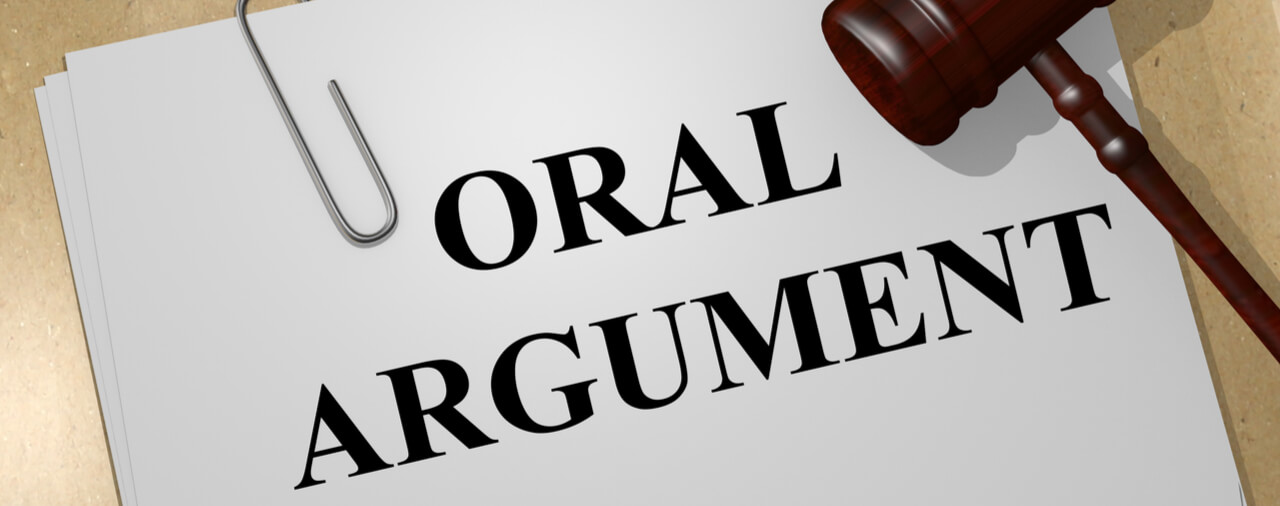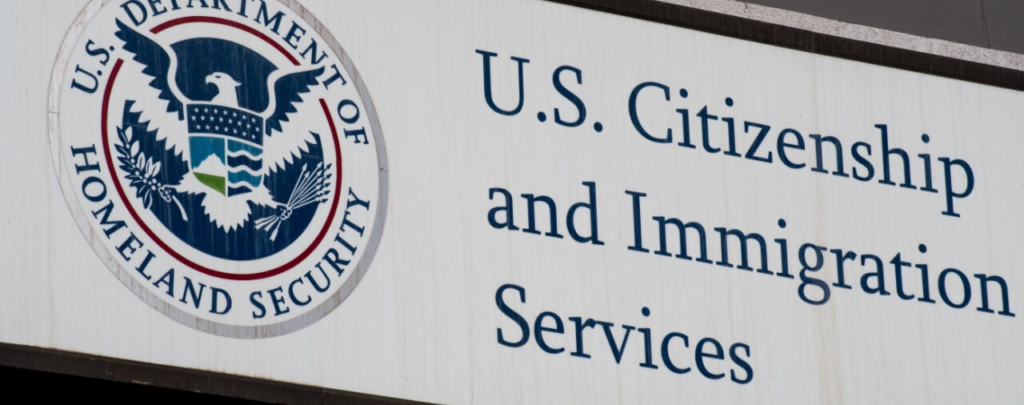Introduction
On January 12, 2018, the Supreme Court of the United States granted certiorari in Pereira v. Sessions, Docket No. 17-459. On April 23, 2018, the Supreme Court heard oral arguments in the case.
The case was taken on appeal from the decision of the United States Court of Appeals for the First Circuit in Pereira v. Sessions, 866 F.3d 1 (1st Cir. 2017) [PDF version]. In the lower court decision, the First Circuit deferred to the precedent decision of the Board of Immigration Appeals (BIA) in Matter of Camarillo, 25 I&N Dec. 644 (BIA 2011) [PDF version] in holding that the issuance of a notice appear that did not conform with all of the requirements of section 239(a)(1) of the Immigration and Nationality Act (INA) was nevertheless sufficient for triggering the “stop-time rule” in section 240A(d)(1) — i.e, stopping the accrual of unlawful presence necessary to be eligible for cancellation of removal. Specifically, the deficiency concerning the First Circuit involved a Notice to Appear that did not include the time and date of the initial hearing.
The First Circuit decision parted ways from contrary decisions on the same issue from the United States Courts of Appeal for the Second, Fourth, Sixth, and Seventh Circuits. This “circuit split” likely prompted the Supreme Court to grant cert in the instant case.
In this article, we will briefly examine the oral arguments in Pereira v. Sessions and provide analysis. Our discussion will presume that you have some familiarity with the case and the issues presented. For the full case background, including a discussion of the pertinent lower court decisions and BIA precedent, please see our full article before reading our discussion of the oral arguments [see article]. In that full article, we also quote the question under consideration by the Supreme Court on appeal [see section].
Oral Arguments of Petitioner (on behalf of Pereira)
The Supreme Court first head oral arguments from the petitioner, Wescley Fonseca Pereira. Arguments on behalf of the petitioner were presented by David J. Zimmer, Esq. Here, we will examine his arguments and some of the more interesting exchanges with the justices.
Zimmer’s main argument was that section 239(a)(1) clearly and unambiguously defines a “Notice to Appear.” Specifically, he stated that the statute defines it “as notice that provides specific information, including the time and place at which proceedings will be held.” Because the issuance of a “Notice to Appear” triggers the stop-time rule for cancellation of removal under section 240A(d)(1), Zimmer argued that a Notice to Appear that does not satisfy the requirements of section 239(a)(1) does not trigger the stop-time rule.
Justice Samuel Alito asked Zimmer whether he believed that his interpretation of the relevant provisions were “so clear that it wouldn’t be necessary for us to get beyond step one of Chevron.” As we explained in our article on the Court’s decision to grant cert, a central question in the case was whether the courts should defer to the BIA’s interpretation of the requirements for a sufficient Notice to Appear for purpose of triggering the stop-time rule [see section]. Chevron prescribes a two part test, with the first part asking whether the language of the statute(s) in question is or are ambiguous, and the second part asking, contingent on the statutes being ambiguous, whether the relevant agency’s interpretation of the ambiguous provision was reasonable.
Zimmer responded to Justice Alito that he believed that the statute was unambiguous with respect to the definition of the Notice to Appear, and that, by consequence, the definition of the Notice to Appear is incorporated into the stop-time rule requirements. He addressed several questions from Justices Alito and Sonia Sotomayor, taking the position that the statutory language regarding the Notice to Appear conveyed that the language of section 239(a)(1) was definitional, rather than suggesting things that merely could be included in a Notice to Appear.
Justice Sotomayor asked Zimmer if his argument hinged solely on the assertion that the pertinent statutes were unambiguous, meaning that, were the Court to decide that they were not ambiguous, the Court would then have to defer to the BIA’s reading on the basis that the Board’s interpretation was reasonable. Zimmer reiterated that his position was, as he stated in briefing, that were the Court to reject his argument that the statute was unambiguous, it should still rule in favor of his client by finding that the BIA’s interpretation of the statute was unreasonable.
After a long discussion on the practical implications of the Court ruling in Pereira’s favor (see discussion beginning with next paragraph), Justice Elena Kagan returned to the issue of the statutory language. She asked Zimmer to address the alternative view of the statutory language that interpreted the Notice to Appear as a “notice of shorthand,” where the statute does not “define” a Notice to Appear. Adopting such an interpretation, a Notice to Appear that is “flawed in some way” would still, in fact, be a Notice to Appear, rather than a document that does not qualify as a Notice to Appear. She also asked whether it was “crucial” that she agree with his response. Zimmer suggested that there was not much difference between his position and that posited by the justice, because a Notice to Appear can, indeed, be flawed in some respect provided that it nevertheless actually notifies the recipient when he or she has to appear. He stated again that this was an absolute requirement for triggering the stop-time rule. He made clear that it was his position that a “Notice to Appear” that does not tell the recipient when to appear is not a Notice to Appear for purpose of triggering the stop-time rule.
Most of the Court’s questioning of Zimmer concerned ascertaining what the practical implications of ruling in his client’s favor would be.
Several justices posed questions about logistical problems in scheduling hearings in immigration courts. Justice Ruth Bader Ginsburg asked how the government could move to stop the accrual of physical presence toward cancellation in a situation where it did not have a definite open slot for removal proceedings. Zimmer stated that the Government once had a system that allowed it to do so in every case but had subsequently stopped using it for unexplained reasons.
Justice Alito pressed on an alternative issue. He asked whether it is better for the Government to include a date certain in cases where the Government knows that the date is likely to subsequently change. Zimmer argued that, despite the problems associated with rescheduling, what he saw as the statutory requirement that the Notice to Appear include a date was beneficial because it shows that the Government is serious about proceeding with a removal proceeding. He stated that the system “does assume a certain degree of good faith on the government’s part to not put a date that it knows … to be false.” In response to a question by Justice Sonia Sotomayor, Zimmer took the position that while the government may be allowed to change the date on a Notice to Appear after having initially specified a date, the government cannot “change” a date if the Notice to Appear did not specify a date. Furthermore, Zimmer tentatively took the position that the Government may change the date that was included on a Notice to Appear, but it should not be permitted to change from a date to no date before subsequently coming up with a new date. Zimmer acknowledged, however, that provided that the Government specified a date on the Notice to Appear, it could subsequent change that date to a new date while still having triggered the stop-time rule effective as of the date of issuance of the initial Notice to Appear.
Justice Neil Gorsuch followed up on a question by Justice Alito in asking Zimmer to address the concern that the Court, if it were to rule in his favor, “may be creating a perverse incentive here for the government to issue earlier notices to appear on dates that it actually has no intention of proceeding in order to stop the clock on clients like yours, rather than being more forthright and saying we don’t know when we’re going to be able to do it, but here’s a notice to stop the clock.” Justice Gorsuch suggested that the concern was that this would not result in any meaningful difference for individuals such as Pereira. Zimmer responded by taking the position that, at the very least, the concern articulated by Justice Gorsuch would not “create an adverse effect.” Instead, he reiterated that the Government’s issuing of Notices to Appear with no date had a prejudicial effect on individuals such as his client by allowing the Government to trigger the stop-time rule well before it is actually ready to proceed with a case.
Justice Gorsuch questioned whether Zimmer believed that there would be any remedy for individuals such as Pereira in the scenario he described, to which Zimmer responded that they could go into immigration court and attempt to compel the holding of a hearing. Justice Sotomayor followed up by asking Zimmer to address the point that an individual cannot move to proceed with his or her hearings until the government has filed the Notice to Appear with the immigration court, a point with which he acknowledged. Justice Sotomayor then noted that the BIA endorsed the view that the Notice to Appear is not valid until it is filed with an immigration court in the Matter of Ordaz, 26 I&N Dec. 637 (BIA 2015) [PDF version] [see blog], which Zimmer agreed was correct. Zimmer agreed that the filing of a proper Notice to Appear with the immigration court triggers the stop-time rule.
Oral Arguments on Behalf of the Government (Respondent)
The oral arguments on behalf of the Government were delivered by Frederick Liu, Assistant to the U.S. Solicitor General. In this section, we will examine Liu’s arguments and the questions from the justices.
Liu took the position that a Notice to Appear that does not contain a hearing date is sufficient for triggering the stop-time rule. Here, he added that the purpose of the stop-time rule is to prevent an alien from accruing credit for being in the United States toward eligibility for cancellation of removal after the Government has informed the alien that it intends to remove him or her.
Justice Sotomayor asked Liu how his view comported with Matter of Ordaz, wherein the Board, in her view, held that a Notice to Appear is not valid until it is filed by the government with the immigration court. Liu asserted his understanding that under Matter of Ordaz, the a Notice to Appear that is never filed with an immigration court does not have stop-time effect.
Justice Gorsuch followed up on Justice Sotomayor’s question regarding Matter of Ordaz. Here, he stated that he found no statutory basis for the Board’s holding in Matter of Ordaz that a Notice to Appear is not valid until it is filed with the immigration court. Conversely, he suggested that Liu was asking the Court to find that a valid Notice to Appear does not require all of the points listed in the Notice to Appear provision of the INA. He asked whether the Government’s position was “backwards,” adding extra-statutory requirements for valid Notices to Appear in Matter of Ordaz while stripping things that could be read as requirements in section 239 (a)(1) of the INA. Justice Gorsuch asked Liu what he believed were, in fact, the elements of a Notice to Appear.
After endeavoring to distinguish Matter of Ordaz from the instant case, Liu and Justice Gorsuch worked through section 239(a)(1) of the INA to determine the necessary elements of a Notice to Appear in the Government’s view. We will set these out below with citations to the pertinent INA provisions.
Elements of a Valid Notice to Appear in Government’s View:
239(a)(1)(A) — The nature of the proceedings against the alien.
239(a)(1)(B) — The legal authority under which the proceedings are conducted.
239(a)(1)(C) — The acts or conduct alleged to be in violation of the law.
239(a)(1)(D) — The charges against the alien and the statutory provisions alleged to have been violated.
However, Liu took the position that 239(a)(1)(E) (requirements pertaining to alien being notified of right to counsel), (1)(F) (requiring the alien to provide a written record of address and telephone number to be contacted respecting removal proceedings), and 239(a)(1)(F) (the time and place at which the proceedings will be held) were not essential elements of a valid Notice to Appear for purpose of triggering the stop-time rule. He stated that the latter three clauses dealt solely with the mechanics of future removal proceedings.
In short, Liu argued that the Notice to Appear is essentially a charging document, akin to an indictment. As such, the only necessary elements of it were the charges, statutory basis for such charges, and the Government’s intention to pursue removal proceedings. However, Justice Gorsuch still had questions about Liu’s position, asking whether it was the case that Congress decides the essential function of the charging document, here referencing the latter three clauses of section 239(a)(1). Liu took the position that Congress had codified its intent in the statutory appendix to NACARA at 69(a). He explained that when Congress created the Notice to Appear statute in 1996, there was a question regarding the stop-time rule in that the rule referenced the Notice to Appear, but the only charging documents that had been issued before 1996 were Orders to Show Cause. Liu stated that in 1997, Congress clarified that Notices to Appear also referred to Orders to Show Cause, thereby conveying that Notices to Appear were charging documents. He argued that this was dispositive of Congress’s belief that Notices to Appear need not include the time and place at which proceedings will be held to trigger the stop-time rule because the old Orders to Show Cause did not contain this information.
Justice Kagan asked Liu to address the fact that the Notice to Appear suggests by its name and by section 239(a)(1) that it includes telling an individual when and where he or she is supposed to actually appear. She suggested that this distinguished it from a mere charging document. Liu reiterated his position that the Notice to Appear is the “type of notice that needs to be provided to the alien if the government is ever going to effectuate a removal in … removal proceedings.”
Justice Stephen Breyer moved to assess whether the Government would prevail under step 2 of Chevron in the event that the Court accepted the provision that section 239(a)(1) does not require the last three clauses to be present in a Notice to Appear for purpose of triggering the stop-time rule. Here, Justice Breyer returned to the point that DOJ once had a system including scheduled immigration hearing court dates on Notices to Appear and had subsequently abandoned it. Specifically, he requested an explanation of the decision and an assessment of the degree to which the Court needed to accept that explanation (see below) in order to defer to the Government’s reading of the statutes under Chevron step 2. Accordingly, Liu provided three reasons why that scheduling system did not work and why the DOJ abandoned it:
1. It did not allocate workload fairly among immigration judges;
2. It was not capable of prioritizing cases; and
3. Only legacy Immigration and Naturalization Service (INS) officials had access to the system.
Justice Breyer found the third point to be unavailing. Of the first two, he ventured no view, but he asked Liu to highlight where the Government had previously provided this explanation. Liu acknowledged that there was no document setting forth why the BIA had abandoned the previous scheduling system. Justice Breyer’s questions reflected his concerns about whether the Court could defer to a position that the Government had never previously published prior to the briefing and oral arguments in the instant case.
In response to a question from Justice Anthony Kennedy, Liu acknowledged that the vast majority of Notices to Appear omit the time and date. He stated that the Government’s experience in the jurisdiction of the United States Court of Appeals for the Third Circuit — where the time and date is required — highlights its argument that including the time and date is impractical. Justice Sotomayor questioned this “practicability” argument. She noted that the statutes for Orders to Show Cause had included the specification that the time and date could be included if practical, but that the language was not included in section 239(a)(1). She suggested that this signified Congress’ determination that time time and date are required regardless of practicability. Liu responded in two ways. First, he reiterated that the question was whether a Notice to Appear lacking a time and date is still a “Notice to Appear,” to which he argued in the affirmative. Second, he referred to his previous point that Congress concluded in 1997 that Orders to Show Cause — clearly lacking a time and date requirement — were given stop-time effect.
Chief Justice John Roberts asked whether ruling in favor of the petitioner would have any practical effect if it turned out that the Government had to change the date from that placed on the Notice to Appear subsequent to issuing the Notice to Appear. Liu argued that for that reason a ruling in the petitioner’s favor would not change the situation for the petitioner and for similarly situated aliens. Furthermore, he added that “we actually believe telling the alien transparently that a date is to be set is better than telling the alien a date were we have maybe a 20 percent confidence level that’s going to be the actual date…”
Conclusion
Pereira v. Sessions is a significant case that will likely lead to the establishment of a nationwide rule for requirements for a valid Notice to Appear.
It is impossible to deduce a case outcome from oral arguments. This is because a justice may have any number of reasons for asking one question or not asking another question, including asking an attorney to defend positions that the justice in question is inclined toward. However, with that being said, one can sometimes deduce hints from oral arguments, and after carefully reviewing the oral argument transcripts in this case one is far more likely to prefer being Mr. Zimmer than Mr. Liu. Several Justices — notably Justices Ginsburg, Breyer, Sotomayor, Kagan, and Gorsuch — seemed to have serious concerns with the Government’s statutory arguments and, in the case of Justices Breyer and Sotomayor, with whether the Government’s position would even be entitled to deference were it to grant the statutory arguments. While the statutory arguments of Zimmer were also subjected to scrutiny — notably by Justices Alito and Kagan — a larger proportion of the time was taken up by questioning assessing the practical implications of ruling in his favor.
Were one to venture a prediction solely from reading the oral argument transcripts, he or she would likely conclude that there is a good chance that the Court will reverse the First Circuit and rule in favor of the Petitioner. With that being said, we cannot know for sure until the Court issues its decision. We will post an article on the decision once it is published.





